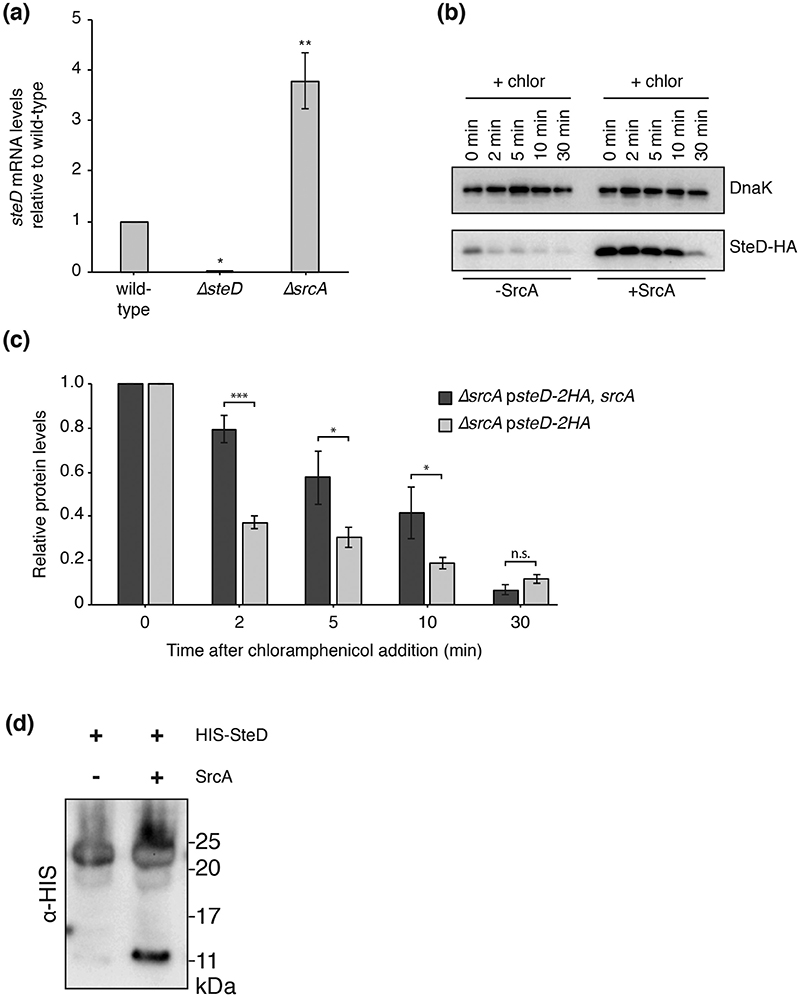Fig. 4. SrcA maintains SteD stability.
(a) quantitative RT-PCR of steD mRNA levels compared to those in wild-type Salmonella. Mean of three independent experiments ±SD. The log10 of the ratios of mRNA levels in the ΔsteD or ΔsrcA strains over those in the wild-type strain were analysed by one sample t-test, **P<0.01, *P<0.05. (b) ΔsrcA Salmonella strains carrying plasmid pWSK29 expressing SteD-2HA under its endogenous promoter with or without SrcA were grown in minimal medium pH 5.0 for 4 h. Chloramphenicol (chlor; 50 ug ml−1) was added at 0 min. At indicated times cell cultures (1 ml) were collected by centrifugation and lysed in 10 μl of Laemmli buffer per 0.1 OD600. Samples were examined by immunoblotting with antibodies against the HA epitope or DnaK. (c) Levels of cellular SteD-2HA were calculated by densitometry from immunoblots against HA using Image Lab software. Protein levels at indicated time points post chloramphenicol addition are shown in relation to those immediately before chloramphenicol addition. Mean of three independent experiments ±SD. Data were analysed by t-test, ***P<0.001, *P<0.05. (d) HIS-SteD was expressed in E. coli strain BL21 under the lac promoter in the presence or absence of ScrA and the protein complex was purified to homogeneity from the soluble fraction. Immunoblotting using an antibody against the HIS epitope was used to visualize SteD.

